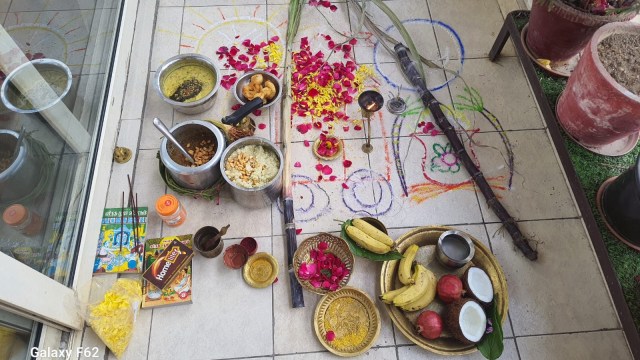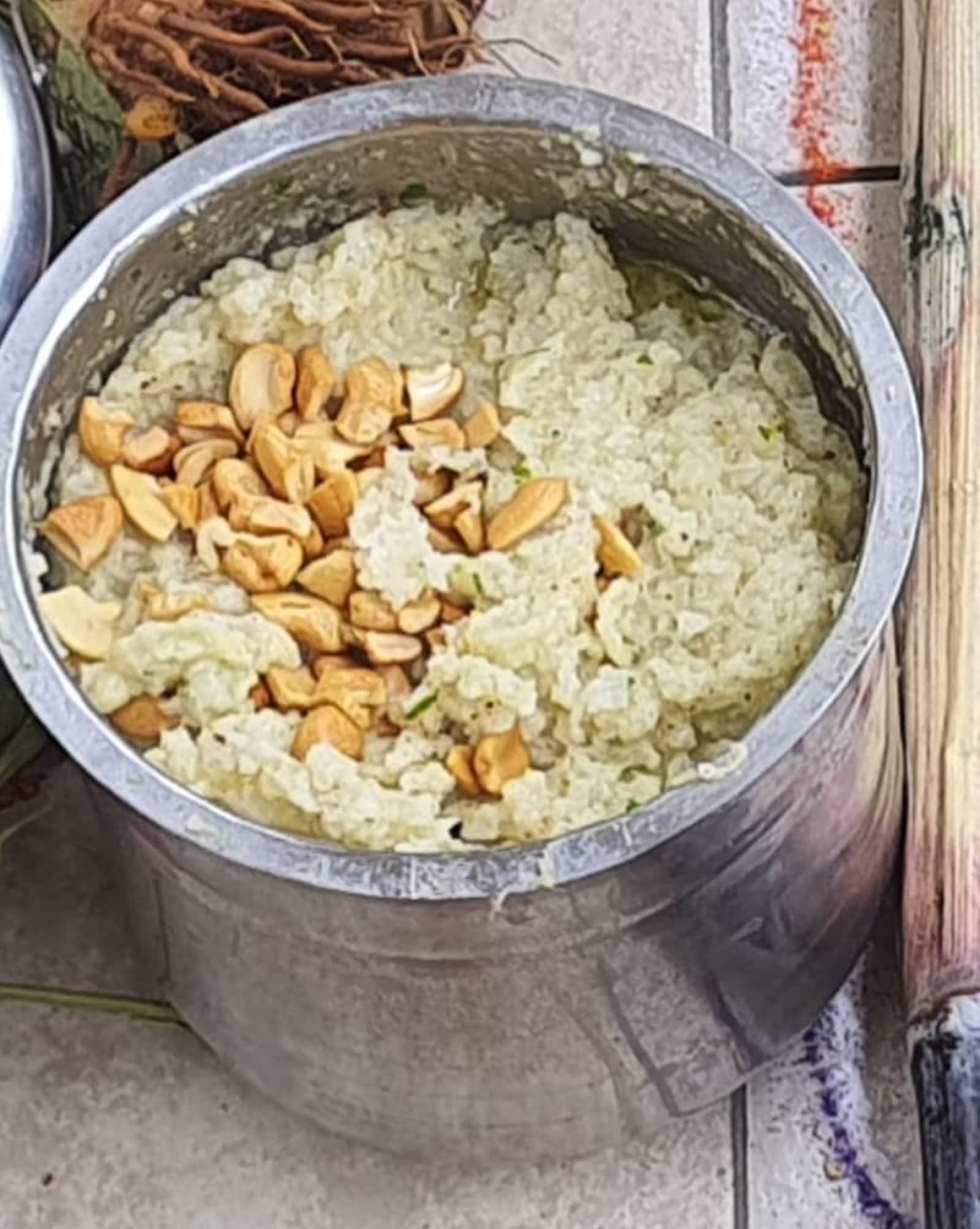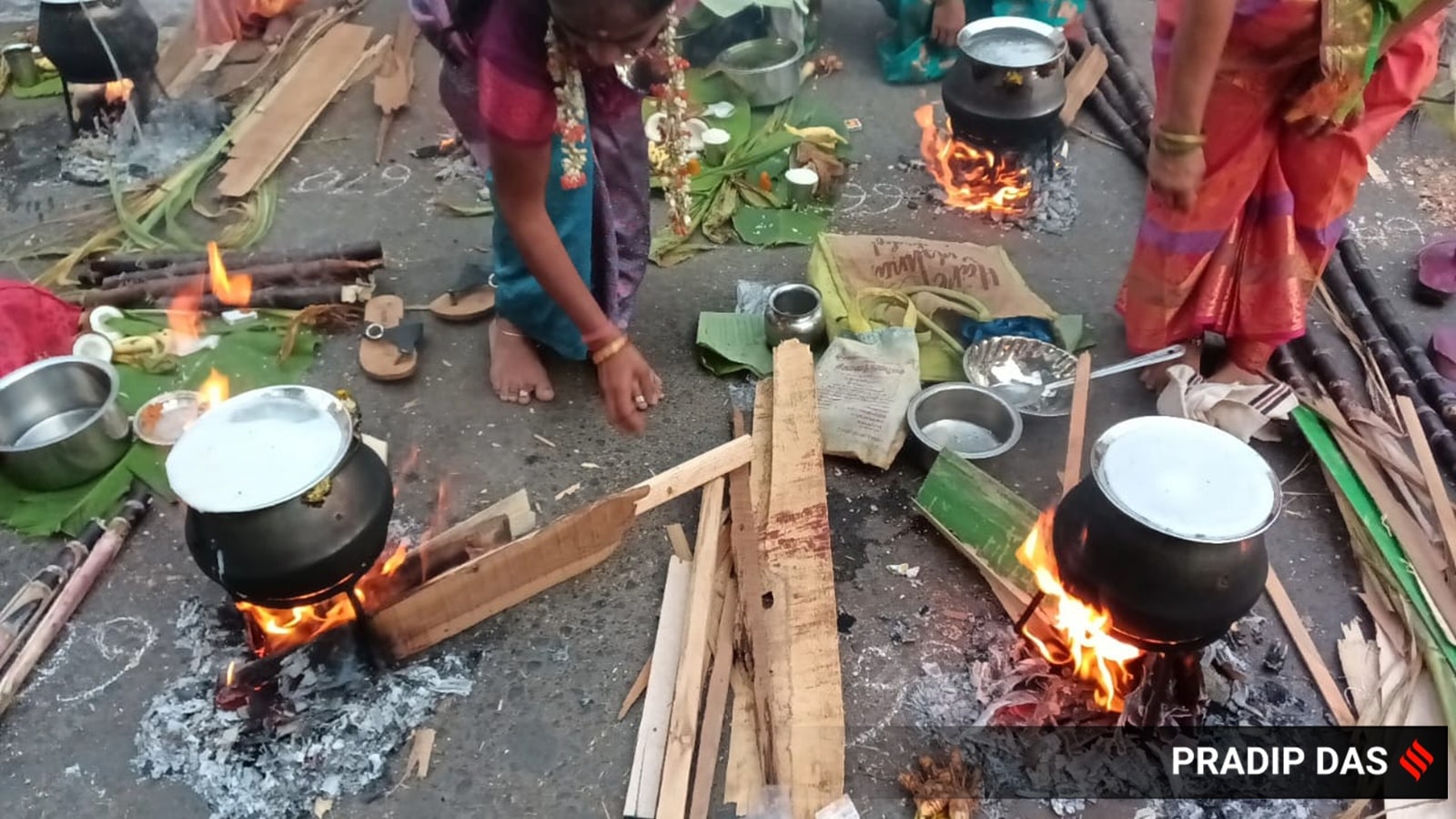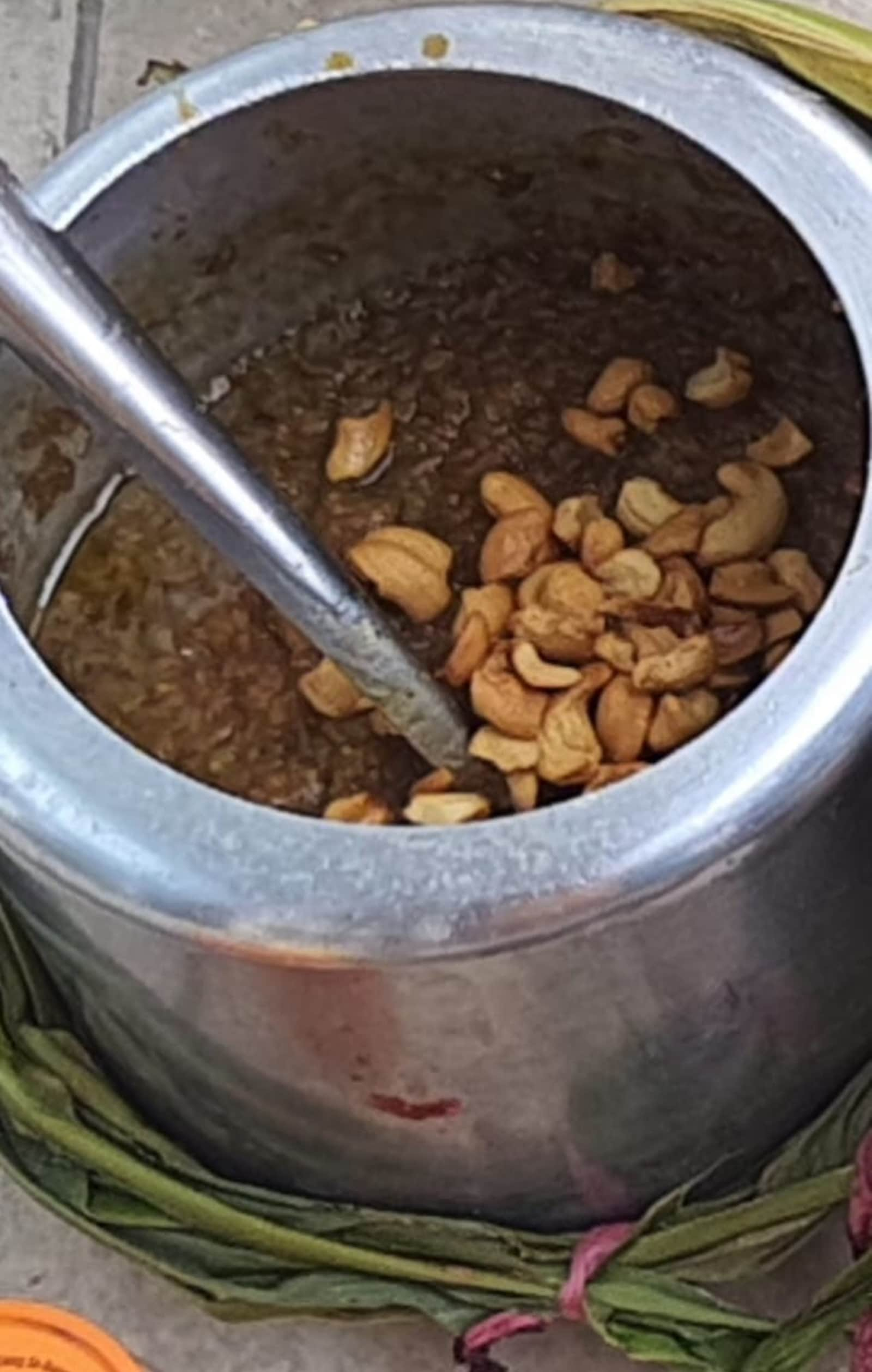📣 For more lifestyle news, click here to join our WhatsApp Channel and also follow us on Instagram
Understanding the different types of pongal and their significance
While vadai, appam, and other South Indian staples can also be made on the occasion, it is customary to make venn pongal and sakkarai pongal.
 Pongal is celebrated with savoury and sweet offerings (Credit: Laxmi Abhishek)
Pongal is celebrated with savoury and sweet offerings (Credit: Laxmi Abhishek)Like all harvest festivals, food plays a significant role in Pongal celebrations. On this auspicious day, the star dishes on the menu feature different types of pongals – or the combination of moong dal and rice – along with other South Indian preparations.
The Tamil festival pays an ode to the farming land, animals, and mother nature for a new, prosperous year. Women wake up early and prepare delicacies while chanting “Pongal O Pongal,” which stands for ‘boil over.’
Saraswathy, a Tamil food content creator, shared that Pongal marks the beginning of the Tamil month ‘Thai’ in mid-January and celebrates the arrival of the harvest season. “Pongal is derived from the Tamil word pongu, which means to boil over. It symbolises abundance, prosperity, and gratitude for the agricultural harvests,” Saraswathy, 89, added.
 Venn pongal (Credit: Laxmi Abhishek)
Venn pongal (Credit: Laxmi Abhishek)
While vadai, appam, and other South Indian staples can also be made on the occasion, it is customary to make venn pongal and sakkarai pongal. Why? “Sakkarai Pongal is prepared to signify and celebrate abundance and prosperity after the harvest,” Saraswathy told indianexpress.com.
But instead of making it in the traditional kitchen, families come together outside their homes to make it in the presence of sunlight over makeshift wood-fired large clay pots or vessels adorned with turmeric root and flowers. The slowly boiled rice and lentils are stirred occasionally while families sing celebratory songs.
“We also make a curry or sambar made with all freshly harvested country vegetables (atleast 7 vegetables are added including pumpkin and sweet potato). Each region has their family way of celebrating Pongal,” said food content creator Aishwarya Damodaran, FoodiesRoof.
 Here’s why pongal is eaten (Express Photo by Pradip Das)
Here’s why pongal is eaten (Express Photo by Pradip Das)
Let’s learn more about the two prominent rice-lentil dishes in detail.
Venn Pongal is prepared by combining moong dal with rice and milk to make a soft khichdi. It is enhanced with the distinct taste of peppercorns, curry leaves, asafoetida, and ginger cooked with ghee and salt. People also add cashew nuts. The fresh ingredients combined with the slow cooking process that needs to boil over symbolises life and prosperity.
As someone who enjoys cooking healthy, food blogger Hina Gujral has experimented with making traditional venn pongal recipes using millet, quinoa, and other ingredients that cater to everyone’s dietary requirements and “also allow me to be more open to learning new ways and styles of cooking”. “This breakfast recipe is wholesome and has to be my favourite owing to its deliciousness and made quite often in my home,” said Bengaluru-based Gujral.
On the other hand, Sakkarai or Chakkarai pongal is prepared with rice, lentils, ghee, and jaggery. It is the sweet offering made to the Sun God. Freshly harvested rice is slowly boiled in cow’s milk along with raw cane sugar or jaggery along with cardamom. People also add dry fruits like raisins, cashew nuts, and coconut to enhance the dish’s taste.
There are now varieties of pongal such as kalkandu pongal (made with crystal sugar), millet pongal, black rice /karuppu kavuni arisi pongal made with karupatti, apprised Damodaran.
Here’s the method to make perfect pongal from Saraswathy
*Wash and soak 1 cup rice with 1/2 cup moong dal for 1-2 hours.
*In a pot (vengala paanai), add milk and water in equal portions.
*When it comes to a boil, add the soaked rice and dal.
*Once it has cooked well, add 2 cups jaggery and stir every now and then.
*In the meantime, temper cashews in 1 cup ghee.
*Once the jaggery has fully dissolved, add the cashews and mix well.
 Sakkarai pongal (Credit: Laxmi Abhishek)
Sakkarai pongal (Credit: Laxmi Abhishek)
Even though cultures may vary, the crux of every celebration remains the same, pointed out Gujral. “All we have to do is enjoy them to our heart’s fullest”. Don’t you agree?
📣 For more lifestyle news, click here to join our WhatsApp Channel and also follow us on Instagram



























